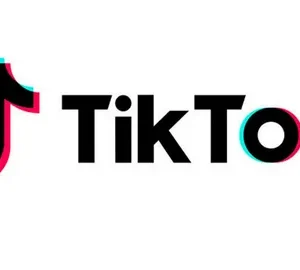The global portable generator market is an integral segment of the power generation industry, providing flexible and reliable energy solutions for residential, commercial, and industrial applications. The market is projected to grow at a compound annual growth rate (CAGR) of 5.60% between 2025 and 2034, driven by increasing power outages, a growing need for backup power, and the expansion of construction and outdoor event industries.
Portable generators have become indispensable in both developed and developing economies due to their versatility, affordability, and ability to provide immediate power supply in off-grid or emergency conditions. With the rise in natural disasters, unpredictable weather patterns, and expanding rural electrification programs, the demand for portable generators continues to surge worldwide.
Additionally, advancements in fuel efficiency, hybrid technology, and noise reduction mechanisms have improved the performance and environmental compatibility of portable generators, making them increasingly suitable for modern applications.
Market Definition and Overview
A portable generator is a compact and mobile device designed to produce electricity using various fuels such as gasoline, diesel, propane, or natural gas. It typically includes an internal combustion engine, alternator, fuel tank, and power outlets. These generators are used for backup power, outdoor activities, and on-site power supply in areas without grid access.
Portable generators range from small residential units to large industrial-grade models. They play a crucial role in ensuring uninterrupted electricity during power failures and emergencies. As industries and households prioritize energy security and resilience, portable generators are emerging as essential tools for continuous operations.
Market Dynamics
Key Market Drivers
1. Rising Frequency of Power Outages
Global energy demand is rising faster than grid infrastructure improvements in many regions, leading to frequent power interruptions. In both urban and rural settings, portable generators offer a convenient solution to ensure continuous power supply for lighting, refrigeration, and critical equipment.
2. Growing Construction and Infrastructure Development
The construction industry heavily relies on portable generators to power machinery and tools at remote or off-grid sites. With infrastructure expansion in developing economies such as India, China, and Brazil, the demand for reliable on-site power generation is increasing rapidly.
3. Increasing Adoption in Residential Applications
The growing prevalence of home offices, small workshops, and recreational activities like camping and tailgating has boosted the residential use of portable generators. Consumers are investing in compact, easy-to-use, and low-noise generators to safeguard against blackouts.
4. Expanding Outdoor and Recreational Activities
The surge in outdoor events, camping, and tourism has amplified demand for lightweight and efficient generators that can power lighting, cooking appliances, and entertainment devices.
5. Technological Advancements
Recent innovations such as inverter-based portable generators, smart monitoring systems, and dual-fuel technologies have improved efficiency, reduced emissions, and enhanced portability. These developments are making generators more attractive for both commercial and domestic users.
Key Market Challenges
1. Stringent Environmental Regulations
Governments across regions are imposing strict regulations to limit carbon emissions and noise pollution from small engines. Manufacturers are compelled to adopt cleaner technologies, which increases production costs.
2. Fluctuating Fuel Prices
The dependence on petroleum-based fuels exposes the market to price volatility, affecting consumer adoption and operating costs, especially in developing nations.
3. Limited Power Capacity
Portable generators are ideal for temporary or small-scale power needs but are not designed for heavy industrial use or prolonged operation, limiting their application range.
4. Competition from Renewable Energy Alternatives
Solar panels and battery storage systems are increasingly being adopted for off-grid and backup power, presenting a potential challenge to traditional fuel-powered portable generators.
Market Opportunities
1. Rising Demand for Hybrid and Battery-Integrated Generators
The integration of battery storage systems and solar charging capabilities into portable generators represents a major opportunity for innovation. These hybrid systems reduce fuel dependency and emissions.
2. Growth in Disaster Preparedness and Emergency Response
Governments and organizations are investing heavily in disaster management infrastructure, driving demand for mobile power units in emergency response operations, healthcare facilities, and relief camps.
3. Increasing Electrification of Rural Areas
In developing economies, portable generators are key to providing electricity in rural and remote regions with limited grid connectivity, thereby supporting education, healthcare, and small businesses.
4. Expansion of Smart and Connected Generators
IoT-enabled portable generators that can be monitored remotely via mobile applications offer new levels of convenience and energy management, appealing to tech-savvy consumers.
Market Segmentation Analysis
By Fuel Type
- Gasoline – Most common fuel type due to affordability and easy availability, suitable for residential use.
- Diesel – Preferred for heavy-duty applications and longer runtime efficiency.
- Propane (LPG) – Cleaner-burning fuel with fewer emissions and longer shelf life.
- Natural Gas – Gaining popularity for low operational costs and eco-friendliness.
- Hybrid/Electric – Emerging category combining fuel and battery operation for enhanced efficiency.
By Power Rating
- Below 2 kW – For small appliances, camping, and recreational use.
- 2–5 kW – Commonly used in households and small businesses.
- 5–10 kW – Ideal for medium-sized commercial applications.
- Above 10 kW – For industrial, construction, and emergency backup purposes.
By Application
- Residential – Backup power, outdoor events, and emergency preparedness.
- Commercial – Retail, offices, restaurants, and healthcare facilities.
- Industrial – Construction, mining, and oil & gas sectors.
- Recreational – Camping, RVs, and outdoor entertainment.
By Distribution Channel
- Offline Retail – Hardware stores, distributors, and specialty shops.
- Online Sales – E-commerce platforms offering convenience and price transparency.
By Region
- North America
- Europe
- Asia-Pacific
- Latin America
- Middle East & Africa
Regional Insights
1. North America
North America leads the portable generator market due to frequent power outages caused by storms and grid failures, particularly in the United States. The high adoption of recreational and residential generators is supported by the presence of key manufacturers like Generac and Briggs & Stratton. Moreover, increasing awareness regarding emergency preparedness continues to drive market growth.
2. Europe
Europe’s market is growing steadily, supported by stringent emission regulations and the adoption of low-emission and hybrid generators. Countries such as Germany, the UK, and France are investing in energy-efficient technologies and smart grid systems to ensure reliable power backup solutions.
3. Asia-Pacific
Asia-Pacific is expected to register the fastest growth rate during the forecast period, fueled by rapid urbanization, population growth, and infrastructure development in countries such as India, China, Indonesia, and Vietnam. Additionally, frequent power shortages in rural areas make portable generators an essential energy source.
4. Latin America
The region is experiencing growing demand from construction, mining, and agriculture sectors. Countries like Brazil and Mexico are investing in modern power solutions to overcome unreliable grid systems and improve rural electrification.
5. Middle East & Africa
Portable generators are widely used in construction, oil & gas, and events across this region. Unstable electricity supply and harsh environmental conditions are driving the need for robust and fuel-efficient portable units.
Competitive Landscape
The portable generator market is moderately competitive, with key players focusing on innovation, fuel efficiency, and noise reduction technologies. Strategic alliances, product diversification, and R&D investments are shaping market competition.
Key Market Players
- Honda Motor Co., Ltd.
- Generac Holdings Inc.
- Yamaha Motor Co., Ltd.
- Cummins Inc.
- Briggs & Stratton Corporation
- Kohler Co.
- Wacker Neuson SE
- Atlas Copco AB
- Harbor Freight Tools
- Energizer Holdings, Inc.
Strategies Adopted
- Development of low-emission, fuel-efficient models.
- Introduction of smart control systems for real-time monitoring.
- Expansion into emerging markets with high electricity shortages.
- Partnerships with disaster relief agencies and construction companies.
Recent Developments
- 2024: Honda launched a new series of quiet inverter generators optimized for residential use.
- 2023: Generac introduced Wi-Fi-enabled smart portable generators compatible with mobile apps for remote operation.
- 2022: Yamaha unveiled a dual-fuel inverter generator capable of running on gasoline and propane.
- 2022: Cummins expanded its distribution network across Asia-Pacific to strengthen its off-grid power portfolio.
Future Outlook (2025–2034)
The future of the portable generator market looks promising as energy resilience becomes a global priority. The following trends are expected to define market growth:
- Increased integration of renewable and hybrid systems combining solar and battery backup with generators.
- Development of eco-friendly and low-noise technologies to meet global sustainability standards.
- Rising popularity of smart and connected generators with IoT-based controls.
- Growing government support for rural electrification projects, especially in Asia and Africa.
- Expansion in rental services as businesses and consumers opt for flexible power solutions instead of ownership.
By 2034, portable generators are expected to become smarter, cleaner, and more efficient, serving as essential energy sources for both emergency and everyday use.





